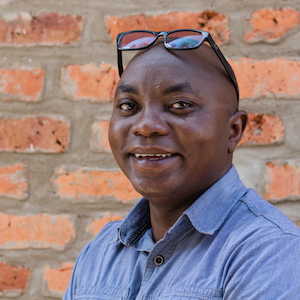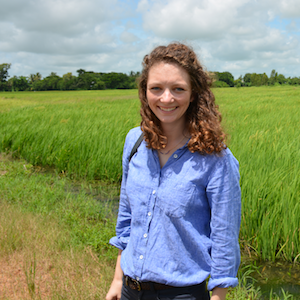Build Peace Fellows 2016 – 2017
The 2016 – 2017 Build Peace Fellows program supported 3 teams working in Myanmar, Bosnia and Pakistan. This program was funded by PeaceNexus.
Diana Dajer

Diana is a Colombian lawyer specialized in administrative law, and a PhD candidate of Socio-Legal Studies at the University of Oxford. Her research focuses on the interaction between citizen participation, technology and peacebuilding in Colombia, using participatory budgeting as case study.
As a Build Peace Fellow, Diana created a web platform called “Nuestro Desarrollo” (“Our Development”) that provides information to the public about the participatory budgeting process run by the Medellín’s Town Hall. The agreements reached so far by the Government and FARC guerrilla in the Colombian peace process emphasize the construction of peace at the local level through active citizen participation, including participatory budgeting. Diana is working with the Medellín City Council to pilot the tool in ways that help foster reconciliation and the creation of a stronger democracy in the Colombian peacebuilding scenario.
“The past months have been highly challenging for participatory peacebuilding initiatives in Colombia, but the project has given me a critical and long-term approach to understand the situation and try to find meaningful context-based approaches to tackle polarization and build a more cohesive society. Likewise, since the project is part of a PhD research, it has contributed to shape the academic debate towards it.”
Visit Policéntrico
Visit Nuestro Desarrollo
Jean Marie Ndihokubwayo

Author, director and producer, Jean Marie is an Audiovisual Researcher at CENAP (Centre d’Alerte et de Prévention des Conflits), a peacebuilding organization in Burundi and a partner of Interpeace.In 2009, Jean Marie created his own company, “Netty Communications”, and produced several movies including “Taxi Love”, “Le Rencard” which together won over 6 awards. Recently, with Pascal Capitolin, he co-directed “I Mashoka”, the second Burundian feature film to be recognized in the international arena.
CENAP is currently conducting a mixed method participatory action research process on Burundian youth’s vision for their country’s future. They are using qualitative (focus groups) discussions and quantitative (survey) data to support dialogue processes on various issues raised by the research. As a Build Peace Fellow, Jean Marie created an online participatory analysis tool to display the quantitative survey data CENAP collected on Burundian youth’s aspirations for the future. It is currently available as a web-based, password protected platform that contains and visualises all the survey data.
Now my organization is aware that technology can help being effective. Most of all, my colleagues understood that with tech tools, we can achieve our objective of helping different stakeholders to participate and engage in dialogue. They saw also that introducing a technology tool is also a process.
Visit the Gacukuzi data platform.
Maude Morrison

Maude managed the Early Warning Early Response (EWER) Program for the Center for Diversity and National Harmony (CDNH), a local NGO focused on reducing communal violence and promoting social harmony. She has a BA from the University of Oxford and an MA from the Johns Hopkins School of Advanced International Studies (SAIS).
The CDNH team currently has a manual process to track rumors of communal violence from a network of approximately 100 local informants who they call on a regular basis. As a Build Peace Fellow, Maude created a rumor tracking app for Android phones. The app is fully functional and currently only available to members of CDNH’s local network. Unlike other reporting apps, the rumor tracker prompts users to check other rumors reported in their area prior to reporting a new rumor, thus avoiding duplication and encouraging users to build upon each others’ information.
In an early evaluation of the pilot, one of the participants wrote ‘I feel like a peacemaker when reporting and analyzing the news on the app’. Another wrote ‘when using the app, I feel like I am doing peacebuilding for Myanmar’. It was exciting to see that they considered this tool a part of peacebuilding and that it had the potential to make them feel empowered and part of a broader movement.
